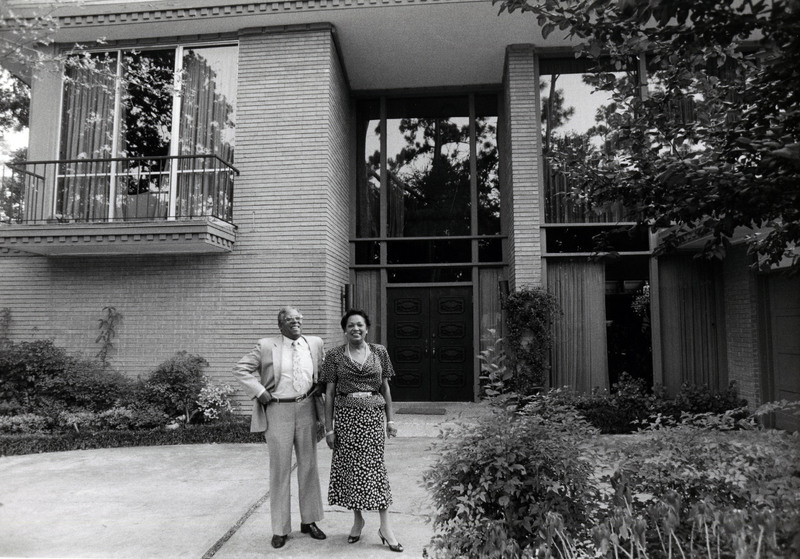February 18, 2025
Riverside Terrace – The Story of a Neighborhood

As diverse and accepting as Houston seems now, that wasn’t always the case. Riverside Terrace, in Houston Southeast, was developed from land owned by Henry MacGregor in the 1920s and it blossomed as a wealthy enclave of Art Deco and Mid-Century Modern mansions set in a pastoral area along Braes Bayou where Houston’s new monied Jewish, among them the Weingarten, Finger, and McGregor families, settled, as deed restrictions kept them from buying in other parts of Houston. Hence the nickname, the Jewish River Oaks, came into being.
But, just as the Jews were kept out of some areas, so were the Blacks kept out of Riverside Terrace.
The late state Rep. Al Edwards recalled his childhood in the surrounding Third Ward: “When I was growing up to some degree some of us didn’t know what racism was all about. But there were places you didn’t go to and things you didn’t do. Unless you were a maid or a yard man.”
But in 1952 a wealthy African-American cattleman, Jack Caesar, move in. He had to have his white secretary purchase the home and then transfer the deed to him, and he moved into the house in the dead of night. Soon after, a bomb was detonated on his front porch. But Caesar stayed, and soon more wealthy Blacks moved in. The construction of 288 cost the area several mansions and, along with the influx of Blacks, property values dropped.
The 1987 documentary by Jon Schwartz “This Is Our Home, It Is Not For Sale” details what happened next. It began with blockbusting, which gave rise to the title which was taken from yard signs posted by homeowners who refused to sell at below-market prices. But they eventually did as white flight drove them to the suburbs.
By 1970 the White population of Riverside Terrace had dwindled to just 15 percent, down from 97 percent in 1950.
By then the neighborhood was being referred to as the Black River Oaks. In 1982, a Texas Monthly article called Macgregor Way “the center of the Black moneyed elite, one of the wealthiest minority neighborhoods in the country” and that it has “central boulevards and bravura mansions” which means the road “recalls—in quite deliberate fashion—the shoulder-to-shoulder palaces of River Oaks.”
Debbie Allen and sister Phylicia Rashad hailed from Riverside Terrace, as well as sisters Beyoncé and Solange Knowles as well as the late Congresswoman Sheila Jackson Lee, and the above quoted Rep. Al Edwards.
Although many of the mansions were divided into apartments or demolished over time, some remain. It is still an idyllic neighborhood with a 90,000-square-foot HEB, and is adjacent to parks and trails, universities, the Museum District, and the Texas Medical Center. The median home price according to realtor.com is $814,500. Since the early 2000s, fewer Blacks have moved into the area due to housing costs, and more Whites are moving in. In a way Riverside Terrace is the story of many American neighborhoods that change and adapt over time.
by Marene Gustin
photo credit: John and Drucie Chase stand in front of their Riverside home, designed by John Chase. Photo from “This Is Our Home, It Is Not For Sale.”
